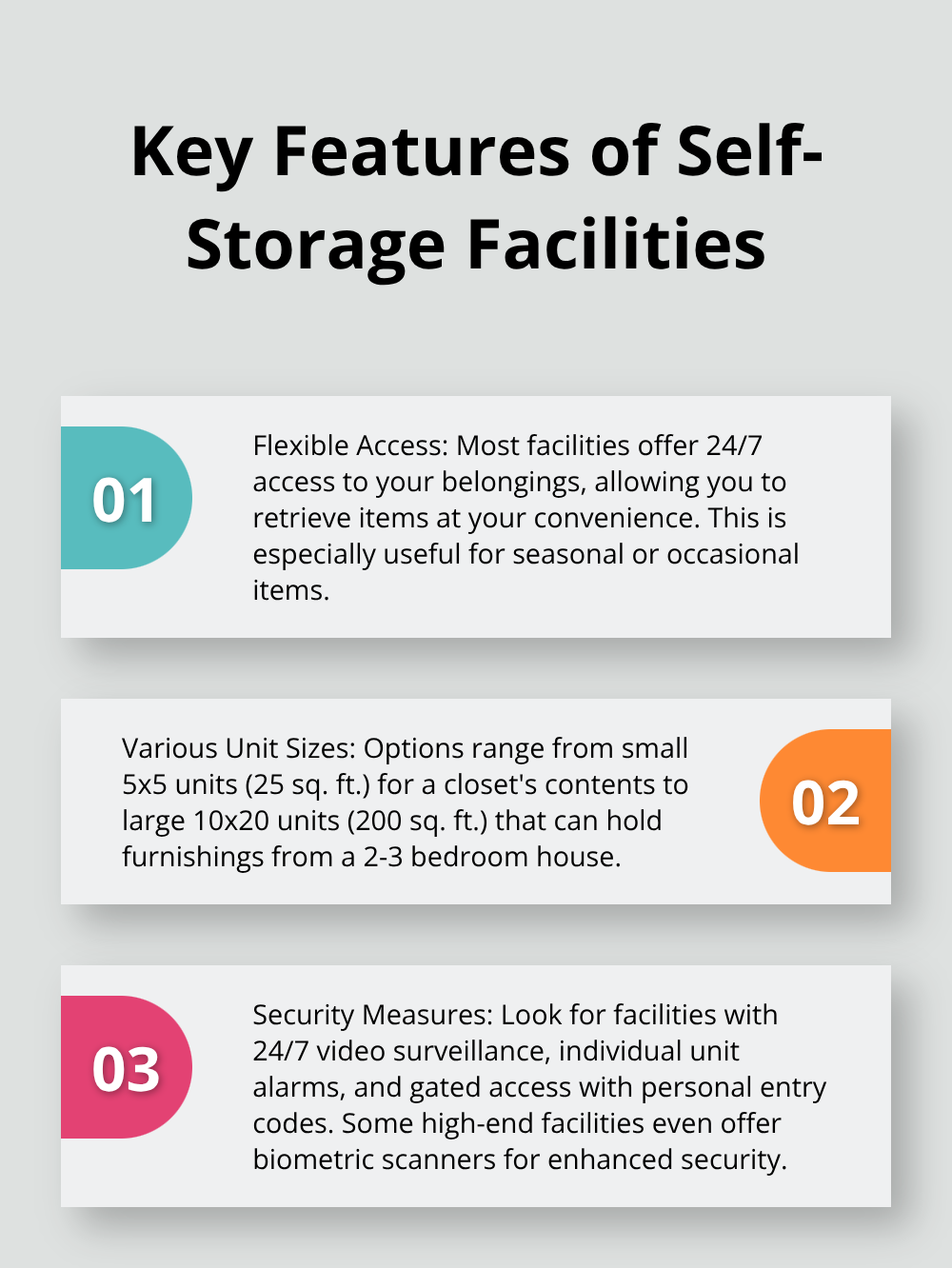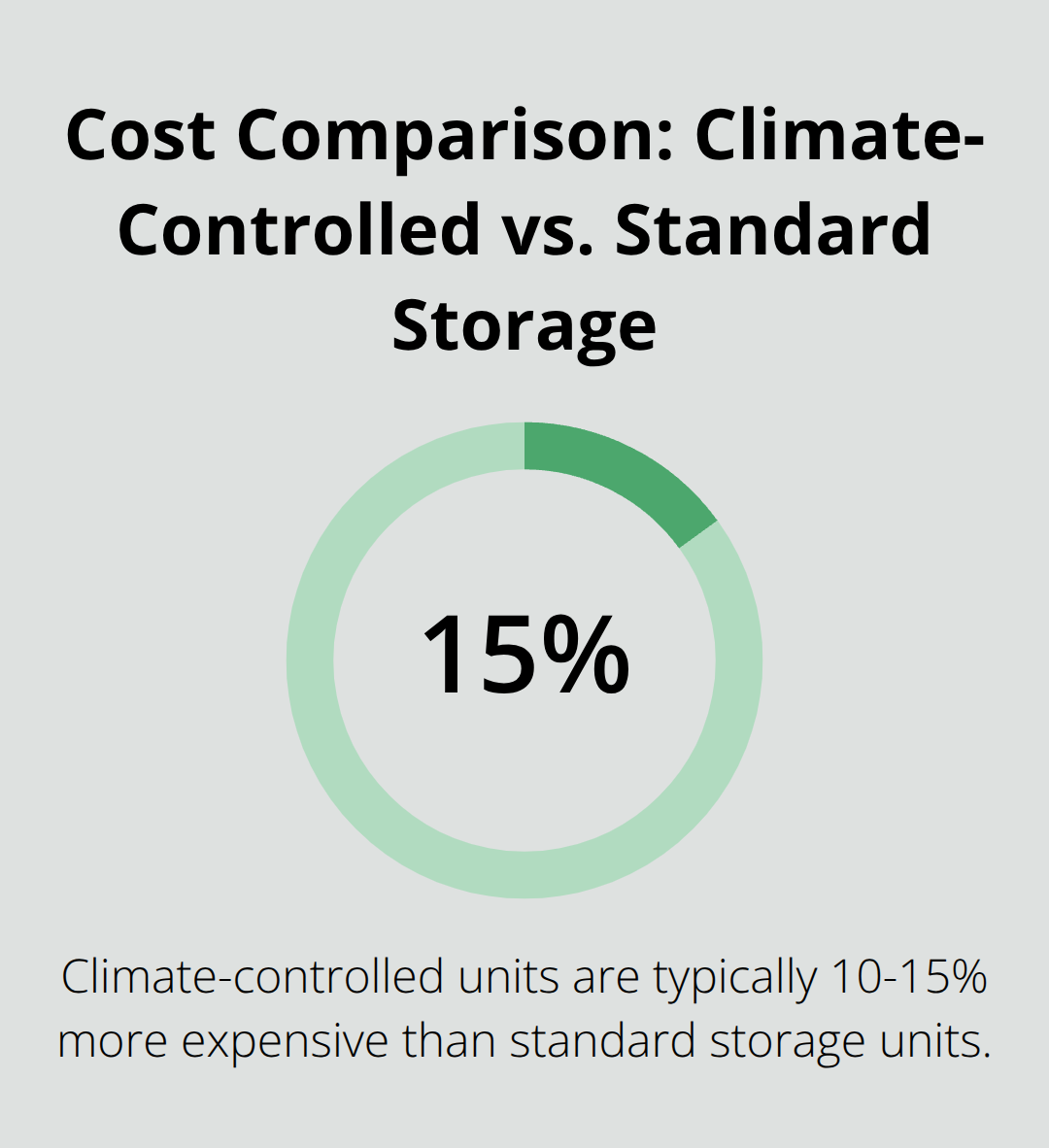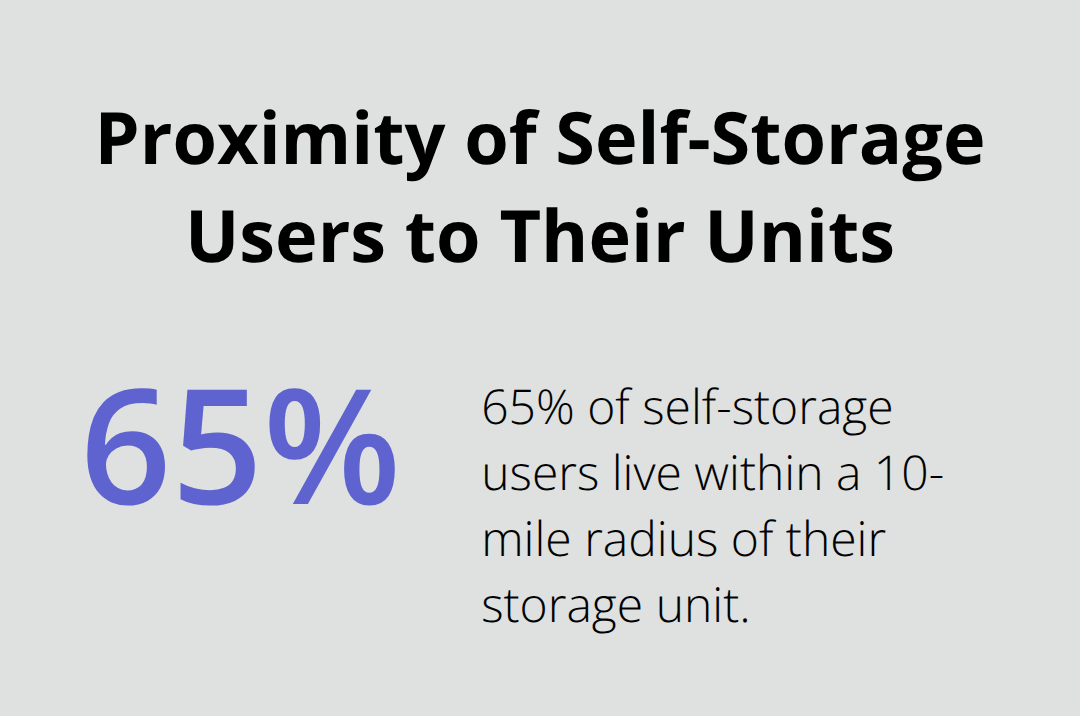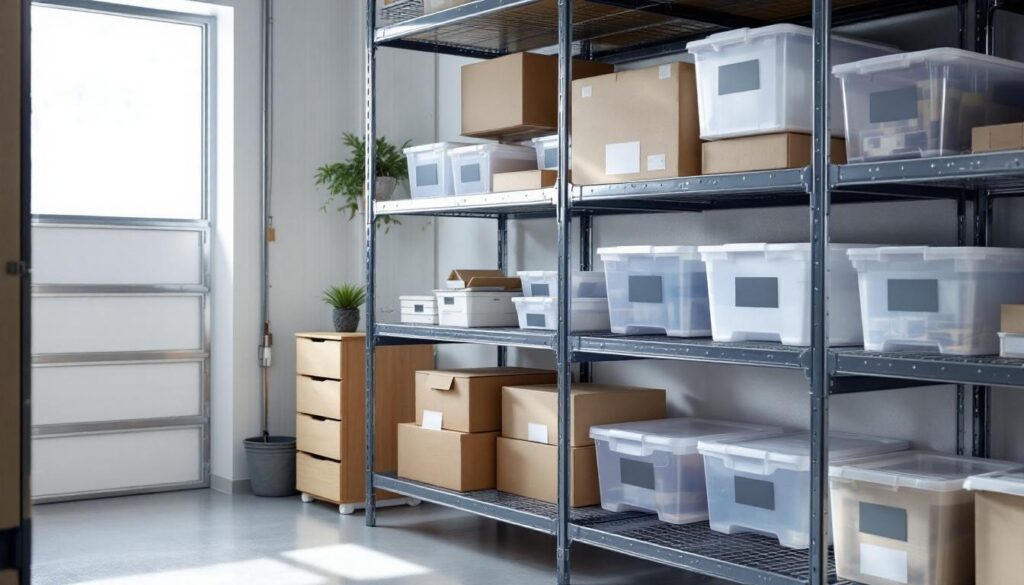Long-term storage options can be a lifesaver when you’re facing a move, downsizing, or simply need extra space. At Southbay Moving Systems, we understand the importance of finding the right storage solution for your unique needs.
In this post, we’ll explore three popular long-term storage options: self-storage units, climate-controlled storage, and on-demand storage. We’ll break down the benefits, costs, and ideal scenarios for each, helping you make an informed decision for your belongings.
Why Self-Storage Units Are a Popular Choice
Types of Self-Storage Facilities
Self-storage facilities offer various options to meet different needs. Indoor units provide climate protection in multi-story buildings. Drive-up units allow direct parking access, perfect for frequent use or large item storage. Outdoor units offer the most affordable option but less protection from the elements.
Advantages of Self-Storage
Self-storage shines in its flexibility. You can access your belongings at your convenience, which proves invaluable for seasonal or occasional items. Most facilities offer month-to-month rentals, freeing you from long-term commitments.
Cost and Size Options
Self-storage unit costs vary based on location, size, and features. A recent SpareFoot report indicates the national average for a 10×10 unit is $91.62 per month. Prices range from $50 to over $300 in high-demand areas (like New York City or San Francisco).
When selecting a unit size, consider both item volume and access needs. A 5×5 unit (25 sq. ft.) typically holds a small closet’s contents, while a 10×20 unit (200 sq. ft.) can accommodate furnishings from a 2-3 bedroom house.
Security Features to Prioritize
Security should top your list when choosing a self-storage facility. Look for:
- 24/7 video surveillance
- Individual unit alarms
- Gated access with personal entry codes
Some high-end facilities even offer biometric scanners for enhanced security.

We recommend visiting potential storage sites in person to assess their security measures firsthand. Ask about insurance options as well. While many facilities offer basic coverage, additional protection for valuable items is often wise. Always read your rental agreement’s fine print to understand coverage details.
As we move forward, let’s explore another popular long-term storage option: climate-controlled storage. This solution offers additional protection for sensitive items that require specific environmental conditions.
Why Climate Control Matters for Your Belongings
The Essence of Climate-Controlled Storage
Climate-controlled storage maintains a stable environment for your possessions. These units keep consistent temperature and humidity levels, which proves invaluable for items sensitive to environmental changes.
Items That Benefit from Climate Control
Certain belongings are particularly vulnerable to temperature and humidity fluctuations:
- Electronics: Computers, TVs, and audio equipment can suffer from condensation and temperature extremes.
- Wooden furniture: Humidity changes can cause warping, cracking, or mold growth.
- Artwork and photographs: Heat and moisture can lead to fading, discoloration, or deterioration.
- Musical instruments: Temperature and humidity shifts can affect tuning and structural integrity.
- Important documents: Paper is susceptible to mold and mildew in humid conditions.
Advantages Over Traditional Storage
Climate-controlled units typically maintain temperatures between 50°F and 80°F. This consistency protects your belongings from the damaging effects of extreme heat, cold, and moisture.
Climate-controlled storage reduces the risk of mold and mildew growth compared to standard units. This protection is particularly important in areas with high humidity or significant temperature fluctuations.
Cost Factors and Potential Limitations
Climate-controlled storage offers superior protection, but it comes at a premium. Climate controlled units are typically only about 10-15% more than standard units. This difference is affordable compared to the cost of replacing damaged items.

When you weigh the cost, consider the potential expense of replacing damaged items. A $5,000 leather couch ruined by mold (or a priceless family heirloom warped beyond repair) could far outweigh the additional storage costs.
One potential drawback is limited availability. Not all storage facilities offer climate control, which may restrict your options. Additionally, these units often have stricter access hours due to the need to maintain environmental conditions.
As we move forward to explore on-demand storage options, it’s important to consider how the level of protection and convenience offered by climate-controlled units compares to newer, more flexible storage solutions.
On-Demand Storage: The Future of Convenience
Revolutionizing Long-Term Storage
Both self storage and traditional storage options can serve storage needs, but they differ significantly in terms of accessibility, security, flexibility, and cost. This innovative service combines self-storage flexibility with valet service convenience, creating a seamless experience for users.
The On-Demand Storage Process
On-demand storage companies operate through user-friendly apps or websites. Users schedule a pickup, and the company sends professionals to collect items directly from their location. These items are then transported to a secure storage facility. When users need their belongings back, they schedule a delivery, and their items return to their specified location.
Unparalleled Convenience
The biggest advantage of on-demand storage is its convenience. Users don’t need to rent a truck, move heavy items, or leave their homes. This service benefits urban dwellers who may lack easy access to traditional storage facilities or transportation options.
A study by the Self Storage Association reveals that 65% of self-storage users live within a 10-mile radius of their storage unit. On-demand storage eliminates this distance constraint, making it an attractive option for those who seek hassle-free storage solutions.

Pricing Models and Considerations
On-demand storage pricing varies, but companies typically charge by item or space used. Some offer flat-rate pricing for standard boxes, while others use algorithms to calculate costs based on item dimensions and weight.
On-demand storage can cost more than traditional self-storage, but it’s important to consider the hidden costs of self-storage (such as truck rentals, gas, and time). The current average price to rent a self-storage unit in the United States is $85.30 a month as of July 2025, but the storage costs can vary. On-demand storage costs range from $5 to $200 per month, depending on the volume of stored items.
Ideal Use Cases
On-demand storage excels in several scenarios:
- Seasonal item storage: Users can easily swap winter coats for summer gear without multiple trips to a storage unit.
- Home staging: Homeowners can quickly declutter for showings or open houses without finding immediate long-term storage.
- Business inventory management: Small businesses can efficiently manage excess inventory without dedicating valuable office space to storage.
The growing demand for flexible storage solutions is evident. While traditional storage options remain popular, on-demand storage presents an intriguing option that blends convenience and security.
Final Thoughts
Long-term storage options offer unique benefits for different needs. Self-storage provides flexibility, climate-controlled units protect sensitive items, and on-demand storage delivers convenience. Your choice should depend on the nature of your belongings, access requirements, budget, and necessary protection level.
We at Southbay Moving Systems understand the complexity of storage decisions. Our experience in the moving and storage industry equips us to help you find the ideal solution for your long-term storage needs. Our secure storage facility and personalized service ensure your belongings receive proper care.
The right storage choice can prevent future headaches. Take time to evaluate your options and ask questions. Your possessions deserve the best care, and with the right long-term storage solution (which may include climate control or on-demand services), you can feel confident about their protection for years to come.




